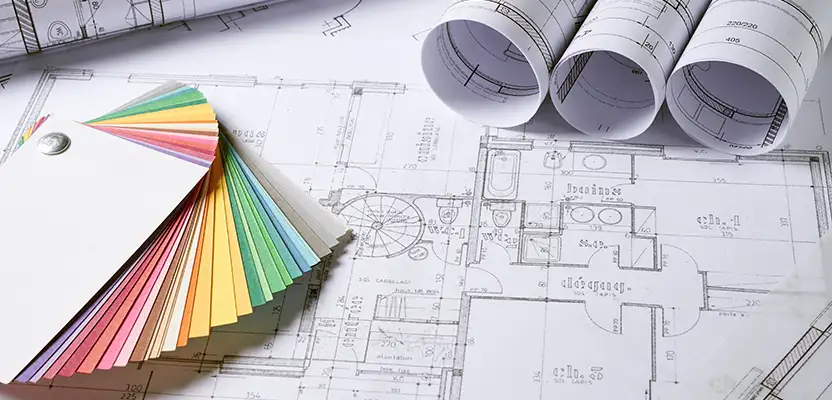Understanding the Diverse Profession Paths Available for Aspiring Architect
As an aspiring Architect, you have a world of occupation courses waiting for you. Whether you're attracted to conventional architecture or the nuances of sustainable style, there's a niche that lines up with your passions.
Standard Architecture: Designing Structures and Structures
Conventional style concentrates on creating structures and structures that blend functionality with visual appeal. As you explore this area, you'll appreciate the elaborate equilibrium between form and function. You'll find out to draw inspiration from historical designs, integrating components like balance, products, and workmanship. Your styles can show cultural heritage, showcasing neighborhood practices while satisfying modern-day demands.
You'll establish abilities in preparing, model-making, and site evaluation, permitting you to picture and connect your concepts efficiently. Involving with customers, you'll require to recognize their vision and equate it into feasible layouts.
Furthermore, developing codes and sustainability practices are crucial in your job, ensuring your structures are eco pleasant and risk-free. As you grow in your job, you'll find possibilities in residential, business, or also reconstruction projects, each offering distinct obstacles. Embracing conventional design paves the means for a satisfying career that admires the past while shaping the future.
Urban Preparation: Forming Neighborhoods and Public Spaces
As a hopeful Architect, you can play a necessary function as an urban organizer, changing exactly how communities function and engage. By using community engagement approaches, you'll guarantee that citizens have a voice in forming their environment. And also, integrating lasting style principles will certainly aid develop areas that not only fulfill today's needs yet additionally secure the future.
Function of Urban Planners
While many could consider architects as the sole enthusiasts behind structures, city coordinators play a vital duty fit the more comprehensive landscape of communities and public rooms. They assess land use, zoning regulations, and neighborhood needs to develop sustainable settings that boost high quality of life. By teaming up with various stakeholders, you'll assist make parks, transport systems, and suburbs that promote social interaction and access. Urban coordinators likewise concentrate on environmental considerations, guaranteeing that growths incorporate eco-friendly spaces and support biodiversity. Your know-how in spatial design and area characteristics enables you to picture future development while protecting cultural heritage. In this essential function, you'll directly influence how people experience their surroundings, making every job a chance for favorable change.
Community Engagement Approaches
Reliable neighborhood engagement approaches are essential for metropolitan coordinators to guarantee that the voices of citizens are heard and valued in the preparation process. To promote meaningful discussion, you ought to prioritize open discussion forums and workshops where area participants can share their concepts and problems. By proactively incorporating and paying attention comments, you'll produce spaces that reflect the area's needs, inevitably leading to more sustainable and effective city atmospheres.
Lasting Layout Principles
When making metropolitan spaces, including lasting style principles is essential for developing environments that flourish both environmentally and socially. Consider integrating eco-friendly rooms, like parks and yards, to boost biodiversity and boost air high quality.
Designing with water preservation in mind is likewise vital-- think regarding rainfall gardens and absorptive surface areas to take care of stormwater. Including area members during the preparation procedure assurances that the spaces you produce satisfy their demands and encourage social communication. By accepting these concepts, you'll add to vibrant, sustainable metropolitan landscapes that profit everyone.

Landscape Design: Creating Lasting Exterior Settings
As you check out landscape style, you'll discover crucial design principles that create useful and beautiful outdoor spaces. Lasting methods play a crucial function in making sure these settings thrive while lessening ecological effect. Plus, you'll find a selection of job possibilities that enable you to make an actual difference in how people engage with nature.
Layout Concepts in Landscape
Comprehending style concepts in landscape architecture is vital for producing sustainable exterior settings that balance with nature. You'll require to ponder components like percentage, balance, and scale to guarantee your designs really feel cohesive and inviting. Additionally, pay attention to seasonal adjustments, creating with materials that complement the environments year-round.
Lasting Practices Review
Lasting practices in landscape design not only concentrate on appearances but likewise prioritize eco-friendly wellness and source preservation. By incorporating native plants, you improve biodiversity and reduce the requirement for chemical plant foods and chemicals. Carrying out effective irrigation systems aids conserve water and reduces overflow, shielding nearby environments. You can make areas that promote soil health and wellness, such as exercising and making use of organic materials permaculture principles. Furthermore, incorporating eco-friendly infrastructure, like rainfall gardens and porous pavements, help in stormwater monitoring and minimizes urban warm. You contribute to a healthier earth and supply spaces that foster neighborhood link when you create outside atmospheres with sustainability in mind. Ultimately, these methods ensure your designs benefit both people and the atmosphere for several years ahead.
Occupation Opportunities Exploration
With a strong foundation in lasting methods, landscape design offers a variety of job paths that permit you to make a purposeful influence on the setting. You could work as a landscape developer, creating visually pleasing and functional outside rooms, or concentrate on environmental remediation, aiding to revive broken environments. Urban organizers often collaborate with landscape architects to produce environment-friendly areas in city setups, boosting city livability. If you're passionate regarding education, take into consideration coming to be a landscape design instructor, motivating future generations. Additionally, you could function with nonprofits concentrated on ecological sustainability or engage in research to introduce new practices. Each course not only forms attractive settings yet also promotes a healthier planet for future generations.
Sustainable Style: Concentrating On Eco-Friendly Practices
As you explore your job in architecture, embracing eco-friendly practices can establish you apart in an affordable field. Lasting design concentrates on creating buildings that decrease ecological impact while boosting occupant well-being. By integrating eco-friendly materials, energy-efficient systems, and sustainable building strategies, you'll add to a greener future.
Begin by obtaining expertise of eco-friendly certifications like LEED or BREEAM, which can reinforce your credentials. Take into consideration how go to my site all-natural light, ventilation, and thermal efficiency can maximize style. Collaborate with engineers and ecological consultants to innovate options that minimize waste and preserve sources.
Don't fail to remember the significance of neighborhood involvement-- engaging neighborhood stakeholders can inspire designs that integrate with the atmosphere. As clients progressively prioritize sustainability, your know-how in green methods will not just bring in tasks yet also fulfill your passion for liable architecture. Welcome this important aspect of the profession, and enjoy your occupation flourish.
Historic Conservation: Securing and Restoring Cultural Heritage
While you commence on your building trip, think about the essential function of historical conservation in maintaining our cultural heritage. This field concentrates on the defense and repair of considerable structures, websites, and structures that inform the stories of our past. By taking part in historic conservation, you'll help safeguard the architectural legacy that shapes community identity.
As a historic preservation Architect, you'll assess historical importance and examine the problem of frameworks. You'll work carefully with conservationists and historians to ensure authentic reconstruction techniques are utilized. This profession course permits you to mix creative thinking with research, allowing you to develop options that respect initial materials and workmanship.
Your work not only adds to sustainability by reusing existing structures but additionally promotes a sense of pride within communities. Welcoming this path will assist you become a guardian of history, protecting the tales and aesthetic appeals that improve our lives.
Interior Style: Enhancing Indoor Spaces
Historical conservation and interior design both share a dedication to improving the developed environment, however they concentrate on different elements. While historic preservation stresses maintaining a framework's social and historical value, indoor architecture absolutely nos in on enhancing interior rooms for capability and aesthetic appeals.
As an aspiring Architect, you'll find that interior style allows you to mix creative thinking with technological skills. You'll make spaces that not only look excellent yet also advertise comfort and efficiency. This field involves understanding just how light, shade, and materials communicate within an area, affecting state of mind and usability.
You'll work on numerous projects, from property homes to business offices, ensuring that each atmosphere fulfills the demands of its owners. By focusing on user experience, you can change insides into useful and inspiring spaces, making a considerable influence on how individuals interact with their surroundings. Embrace the possibility to boost indoor environments and shape the method individuals live and work.
Industrial Style: Merging Functionality With Visual Appeals
Industrial design plays a necessary role in producing products that flawlessly check over here blend appearances with functionality, guaranteeing that what you use daily is not just aesthetically attractive yet likewise sensible. As a hopeful Architect, you can immerse yourself in this area, concentrating on making whatever from furnishings to consumer electronic devices. Your work entails understanding customer requirements, products, and producing processes, enabling you to create ingenious solutions that boost everyday experiences.
In commercial design, you'll often work together with marketing professionals, engineers, and makers, ensuring that your designs are not only gorgeous yet additionally viable. You'll discover to stabilize kind and function, prioritizing functionality without giving up design. By honing your skills in mapping out, 3D modeling, and prototyping, you'll be well-appointed to bring your concepts to life. This career path provides a dynamic atmosphere where creativity meets functionality, making it a gratifying choice for architects thinking about shaping the products of tomorrow.
Regularly Asked Inquiries
What Educational Accreditations Do I Required to End Up Being an Architect?
To become an engineer, you'll require an expert degree in architecture, usually a Bachelor's or Master's. In addition, you'll need to complete an internship and pass the Architect Registration Examination to practice legitimately.
Are There Certification Requirements for Various Architectural Profession Paths?
Yes, there're certification demands for various building paths. Architect. You'll need to pass tests, total internships, and sometimes seek specialized training, depending upon your selected emphasis, like landscape style, urban design, or historical preservation
What Software Program Abilities Are Vital for Architects Today?

How Can I Gain Practical Experience While Studying Design?
You can acquire sensible experience by interning at architectural companies, joining design competitors, volunteering for area projects, or teaming up with classmates on real-world jobs. These chances boost your skills and construct important links in the industry.
What Work Opportunities Exist Outside Typical Architecture Firms?
You can discover various work opportunities outside typical architecture companies, like urban preparation, interior decoration, landscape architecture, building and construction administration, realty development, or perhaps roles in sustainability consulting. Each offers unique difficulties and incentives.
Whether you're drawn to standard architecture or the nuances of lasting layout, there's a specific niche that straightens with your interests.When developing metropolitan rooms, incorporating sustainable style concepts is crucial for creating atmospheres that grow both environmentally and try this website socially.As you explore landscape design, you'll find necessary layout principles that create useful and gorgeous outdoor rooms.Understanding layout principles in landscape style is important for producing lasting outside settings that harmonize with nature.In industrial layout, you'll frequently work together with marketing professionals, suppliers, and engineers, ensuring that your designs are not just lovely however likewise possible.